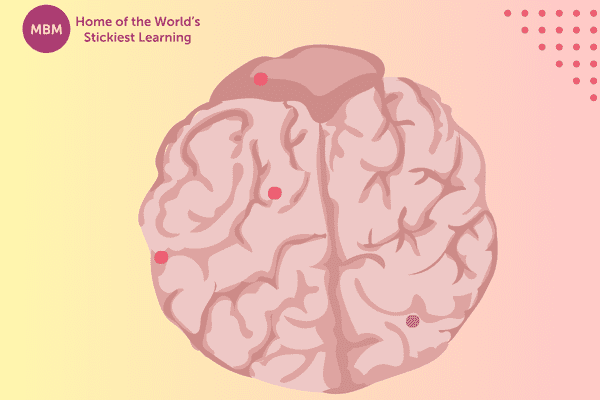Steps To Take To Make Your Business a Safe Space to Work In
Aggressive behaviour in the workplace covers any act of aggression, physical assault, or threatening or coercive behaviour, that causes physical or emotional harm in a work setting. All in all, employers ultimately have the responsibility to create a safe and healthy workplace for their employees. Now while every employer naturally wants their business to be a happy place for everyone to work in, there’s no escaping the fact that when people are at work, their emotions can run high at times. Even so, working together means you need to have a clear line of accepted conduct in place, for people to follow.
What is Aggressive Behaviour in the Workplace?

Well, aggressive behaviour means any incident where an employee is threatened, assaulted, harassed, intimidated, or verbally abused in circumstances relating to their work, creating a risk to their physical or emotional well-being. Also, it can occur between employees, customers, clients, or anyone else who interacts with employees during their work. Consequently, aggressive behaviour can have serious consequences for the victims including physical harm, emotional trauma, and stress-related illnesses.
So, within this context, aggressive behaviour covers verbal or physical behaviour towards co-workers that crosses the line of acceptable conduct, and the person affected experiences a sense of threat or worse. Unfortunately, whether it’s deliberate or not, this kind of behaviour can cause a great deal of harm and have serious consequences. Now these can include reduced productivity, increased stress, decreased morale and higher staff turnover. Hence, in this article, we look at what you can do to deal with it.
What Is An Example of Aggressive Behaviour?
Note that aggressive behaviour in the workplace can occur at all levels of the business, and happen between co-workers, supervisors, subordinates, and maybe also customers and suppliers. Now common examples include gossiping, bullying, intimidation, workplace sabotage, sexual harassment, racism, ageism, homophobia, and transphobia.
Taking the last few on this list, aggressive behaviour can be worse in businesses where management has implemented a diversity and inclusivity policy, but not everyone has bought into it. And left unchecked, these behaviours can have a significant negative impact on the business.
What Are The Traits Of Aggressive Behaviour?

Aggressive behaviours are actions that intentionally inflict harm on others, including the sub-traits of physical aggression, verbal aggression, anger, and hostility. Looking at these sub-traits in more detail, a habitually aggressive person is likely to have tendencies to the following:
- First, a general propensity to engage in acts of physical and verbal aggression.
- Proneness to anger.
- And the inclination to hold hostile beliefs about other people across situations.
Sticky Learning ® is 7 times more effective than 1-day training courses. Plus, you will get a Chain of Evidence proving your Return on Investment. Discover soft skills training that changes behaviours long term.

What Does It Mean When Someone Is Aggressive?
Well, an aggressive person has the following characteristics:
- Showing anger, uncontrolled emotions, and willingness to attack other people.
- Possibly also afraid, overwhelmed, feeling treated, or out of control.
- And may have more complicated underlying problems than you realise.
What Is Aggressive Behaviour in the Workplace?
People talk about there being 5 kinds of aggressive workplace behaviour:
- Verbal
- Physical
- Relational
- Passive-Aggressive
- And hostile
Later, we’ll look at these in more detail in a moment. First, though, it’s helpful to see workplace aggression as falling into three distinct types.
Types of Aggression
Now the difference between the types comes down to this, whether the aggression is in the moment; or the person is innately hostile, so the aggression is always there; or, it is planned and premeditated. So, we have:
- Impulsive aggressive, or reactive-expressive – in response to emotions experienced at the moment.
- Reactive-expressive – innate hostility: being ready for a fight all the time. Hostile people are often stubborn, impatient, hot-headed, or have an “attitude.”
- Instrumental aggression, or cognitive aggression, pro-active or relational – planned and carried on with the intent to achieve a goal.
What Is Aggressive Behaviour In The Workplace? Revisited

Now, let’s go back to the 5 kinds of aggressive behaviour we mentioned:
1. Verbal Aggression:
Now this includes:
- Shouting, swearing and harsh language.
- Rudeness, anger, intimidation, threatening, gossiping, or spreading rumours.
- Also, it can include face-to-face contact, and phone calls, notes, letters, emails, and social media.
Note that verbal aggression is likely to result from a deterioration in working relationships and can involve people ganging up on an individual.
2. Physical Aggression:
- Takes in either threats or actual violence: crowding, jostling, mobbing, pushing, punching, biting, hitting, using objects to inconvenience or harm others, and property damage.
Now this kind of workplace aggression is ‘Instrumental aggression,’ as described earlier. Basically, it’s planned and carried out with the intent to achieve a goal. And it may well result in serious physical injury, and employers need to be on the lookout and involve the police where appropriate. Note that physical aggression may develop between groups of workers from different communities, where there are external tensions.
3. Relational Agression:
- This involves violating social boundaries, or planned or sustained behaviour. Relational aggression involves a relationship, in this case a working one, between the two parties, and includes bullying, coercion, or manipulation.
Note that as an employer or a colleague, you need to be on the lookout for the following, damaging signs of relational aggression in a work team:
- Abusing positions of authority.
- Putting others down, being dismissive or demeaning.
- Speaking condescendingly.
- Overpowering others.
- Not showing appreciation.
- Rushing others unnecessarily.
- And ignoring others.
In the workplace, relational aggression can creep up over time, if people aren’t aware of it happening. It can go hand in hand with a boss or line manager micromanaging and controlling, and the person on the receiving end being vulnerable. So if you see this developing, it’s important to nip it in the bud before things deteriorate further.
4. Passive-Aggressive Behaviour:
So this refers to an individual showing a pattern of indirect resistance, hostility, or negativity, expressed indirectly or covertly. It involves subtle but purposeful actions or words that convey anger, resentment, or dissatisfaction, without openly confronting the issue. Colleagues or line managers need to talk to them about it.
Now the traits of a passive-aggressive person can include patterns of:
- Passive resistance to social and occupational task completion.
- Complaining.
- Feeling misunderstood or unappreciated.
- Frequent arguing.
- Acting sullen or grumpy.
- Bitterness and scorn towards authority.
- Resentfulness towards the success of others.
- And envy.
You can read more about passive-aggressive behaviour in the workplace.
A passive-aggressive person may be having an off day, or have lost interest in being part of the team for the moment. Now it’s probably best for their leader or manager to speak to them and find out the underlying reason. And if they continue with this behaviour, perhaps suggest they should think about moving on.
5. Hostile Aggression:
Now this final kind of aggressive behaviour is impulsive, motivated by a desire to hurt someone. In dealing with it, you don’t have time to go into all the ins and outs. The person is flaring up.
Top Tips To Help Deal with Aggressive Behaviour

Generally speaking, when you see aggressive behaviour happening, you need to handle the situation there and then. So, here are some tips to help:
How to Spot Aggressive Behaviour When It’s Happening
Look out for:
- Sudden changes in body language, or tone of voice.
- Pacing, fidgeting or overemphasised gestures.
- Disruptive behaviours – for example, yelling, repeated interrupting or refusal to take instructions.
- And clenched fists or tightening of the jaw.
Key Things To Remember, when Dealing With Aggressive Behaviour
- First of all, be self-aware. Try to avoid physical contact, as this may cause provocation.
- Remain objective.
- Keep non-verbal communication low-key.
- Listen actively.
- And provide solutions.
Keep Calm
- Speak calmly, and stay confident. Use a low, even voice.
- Empathise with the person’s feelings, but not their behaviour.
- Seek support from your colleagues.
- Ask the aggressor to leave the premises.
- And leave the area if you’re feeling unsafe.
So Why Is There Aggressive Behaviour In The Workplace?
Well, here are some things to consider:
Aggressive Behaviour In Adults:
Now the reality is, that adults can show aggression as a natural response to stress, fear, or a sense of losing control. People may also respond aggressively when they feel frustrated, mistreated, or unheard of – especially if they have never learned how to manage their emotions effectively.
What Causes Aggressive Behaviour In The Workplace?
The common causes are:
- Stress
- Power imbalances
- Lack of communication
- And personality conflicts (find out your personality with Myers Briggs)

All in all, stress at work is inevitable to an extent, because of day-to-day pressures. That said, aggressive behaviour is more likely to happen when people are faced with particularly stressful situations such as:
- Company mergers.
- Job layoffs or being fired.
- Demotion, disciplinary action or changes in job duties.
- And relationship breakdown.
How to Control Aggressive Behaviour
Thankfully, there is quite a lot that leaders and managers can do, to control and prevent aggressive behaviour. So let’s have a look at the options:
What Can You Do To Prevent Aggressive Behaviour?
- Firstly, have policies and procedures in place, including security and involving the police, if needs be.
- Communicate the existence of these policies to all employees, and train line managers and others to identify and report incidents.
- Take timely steps to identify any external factors that may contribute.
- Carry out conflict resolution training.
- Improve communication and leadership skills.
- And address issues related to job stress or workload.
Making Things Better – Aggressive Behaviour Protection
It’s best to be proactive. Here’s a checklist of areas for employers to pay attention to:
- Workplace discipline and practices.
- Conflict resolution.
- Rules and conventions.
- Social sanctions.
Helping Employees to Recover
With individuals who are known to be easily triggered and react aggressively, it’s important to:
- Appreciate the person’s history.
- Have a team around them to give support.
- And consider referring them to therapy and counselling services.
Aggressive Behaviour in Psychology

Also, it’s worth being aware of current thinking about the underlying psychology of aggressive behaviour. First, emotional or impulsive aggression refers to aggression that occurs with only a small amount of forethought or intent. Biological, psychological, and socioeconomic influences can all cause aggression.
Now biological causes of aggression include: genetics – men are more likely to be aggressive, as are people in general with emotional problems handling challenging situations. Also, this includes people with certain neurological conditions, which can heighten aggression. And substance abuse, such as alcohol and other drugs. Some prescription medicines can cause overwhelming stress, leading to aggression.
Psychological causes might be poor peer relations can make people isolated psychologically or physically, which in turn might result in depressive or disruptive problems. This can stem from poor peer relations in childhood and teenage. Also, poor friendship quality. And let’s not forget internalising problems rather than identifying and expressing them, or even borderline personality disorder.
Lastly, socioeconomic factors consist of interpersonal domestic abuse – relative, spouse, partner, companion. Neighbourhood, group or cultural factors. Also, perceived privilege, or deprivation. And being a member of an oppressed group. Note that group aggression can also occur when people come together in one place, like in a workgroup.
Get the Aggressive Behaviour PDF
Now if you want to read more about this, you can download a PDF, Aggression and Violence: Definitions and Distinctions. It’s an excerpt from the Wiley Handbook of Violence and Aggression.
How Can You Manage Your Own Aggressive Behaviour?
Well, if you know you get annoyed easily, here are some tips.
Focus on the way you communicate your feelings, then work to develop assertive behaviours:
- To start, keep a polite, conversational tone.
- Maintain eye contact without glaring.
- Use relaxation techniques when you need to calm down.
- Also, learn to enjoy joining groups without controlling them.
- Consider what could be right about another person’s point of view during disagreements, rather than automatically opposing someone.
- Look for the value in others and yourself.
- Reach for your goals, without causing others to experience harm.
- Lastly, work through underlying issues that may be leading to your behaviour, perhaps with the help of a mental health professional or therapist.
Develop assertive behaviour, instead of getting upset:
- Stand up firmly for yourself, without intending harm to others.
- Exercise your rights, but avoid stepping on the rights of others.
- When you’re assertive, you’re more likely to have better relationships and improved mental health.
9 Steps to Dealing with Aggressive Workplace Behaviour

- Remember, don’t suffer in silence.
- Also, be assertive, not aggressive.
- Seek support from others.
- Empathy is important, but so are you!
- Shed light on the aggressive behaviour – don’t keep it to yourself.
- Know your rights.
- Record instances of hostility.
- Create space.
- Lastly, step away.
Follow the “LASSIE” Method
Now here’s one more list to help run support and validate a troubled colleague:
- Listen
- Acknowledge
- Separate
- Sit
- Indicate
- Encourage
AND FINALLY: Restore Calm with Making Business Matter’s Mental Health Coaching Cards
Note that aggressive behaviour in the workplace may go hand in hand with stress and poor mental health. In fact, in 2018, 12.8 million working days were lost, and 602,000 workers suffered from work-related stress, depression or anxiety. And since the pandemic, leaders and managers have come to realise that having the right questions to support their teams is vital.
So support your team’s mental well-being with these Coaching Cards, based on the MIND model. Using our Coaching Cards will enable you to:
- Firstly, support a college that is struggling with anxiety or aggression.
- Coach a person on your team to identify why they are feeling bad about themselves.
- And have a team discussion about mental health, by using these cards as a catalyst for conversation.
Who Are These Cards For?
Ideally, these Mental Health Coaching Cards are for anyone who cares about their people. They are for leaders who want to support their team in every aspect of their role, including their mental wellbeing.
What Do You Receive?
Basically, this is a 48-card deck of questions, based on a questioning model ‘MIND’ which we have used when working with people amid anxiety and panic attacks as well as helping individuals stay focused on the cusp of PTSD flashbacks.





